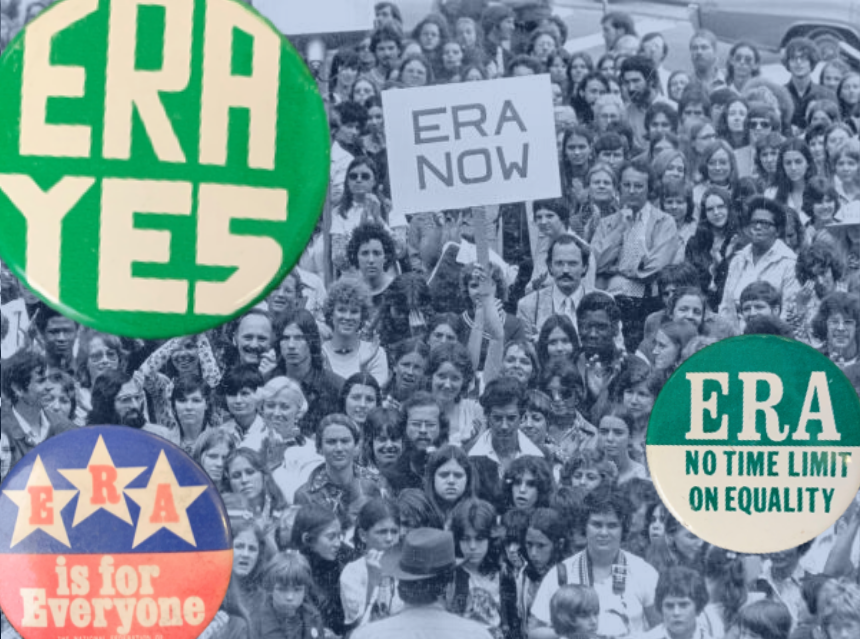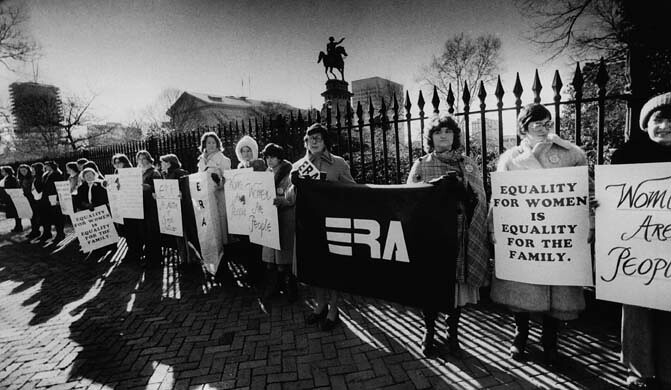Photograph: Pauli Murray, Florence Price Dwyer On July 2, 1964, President Lyndon Johnson signed the…
The Equal Rights Amendment: What It Is and Why We’re Talking About It

What is the ERA?
The text of the Equal Rights Amendment (ERA) is short and simple: “Equality of rights under the law shall not be denied or abridged by the United States or by any state on account of sex.”
Alice Paul introduced the first version of this amendment at the Seneca Falls convention in 1923. It was opposed by labor unions, who fought for workplace safety guidelines that would treat men and women differently, as well as by social conservatives who felt that it would destabilize society.
The fight for the ERA resurged during the civil rights and women’s rights movements of the 1960s, and eventually Congress passed the ERA in 1972. Congress gave an initial deadline of 7 years– later pushed to 10– for ratification by 38 states, or 3/4 of states, before it could go to the archivist of the United States and be approved as a constitutional amendment. Due to vehement campaigning by the opposition, only 35 states had ratified the ERA by the deadline in 1982. By that time, five states also attempted to rescind their ratifications, a decision which has not been recognized by the courts.
Why is the ERA in the news now?
Recently, the ERA has been thrust back in the limelight. Nevada became the 36th state to ratify it in 2017, and Illinois became the 37th in 2018. After the recent 2019 elections, the Virginia legislature indicated that it would make the ERA a priority in 2020.
In response, Alabama, Louisiana, and South Dakota filed a federal lawsuit against the ERA last December, seeking to block it from being added to the U.S. Constitution. Then, on January 8, a statement by the U.S. Justice Department’s Office of Legal Counsel said that the ERA Resolution has expired based on the 1982 deadline, and that they recommend against passing the ERA because of that.
Finally, on January 15th, Virginia became the 38th state to approve the ERA, making it the last state needed to become an amendment. And last week, the U.S. House of Representative voted to extend the deadline for ratification.
What’s next for the ERA?
The House’s extension of deadline ratification of the ERA was just the first step; the Senate still needs to take up and approve the measure for the amendment to move forward.
The Equal Rights Amendment still has a long way to go but its revival— exactly 100 years since the 19th Amendment was passed—gives hope that the work women are doing today will continue to impact the future.






